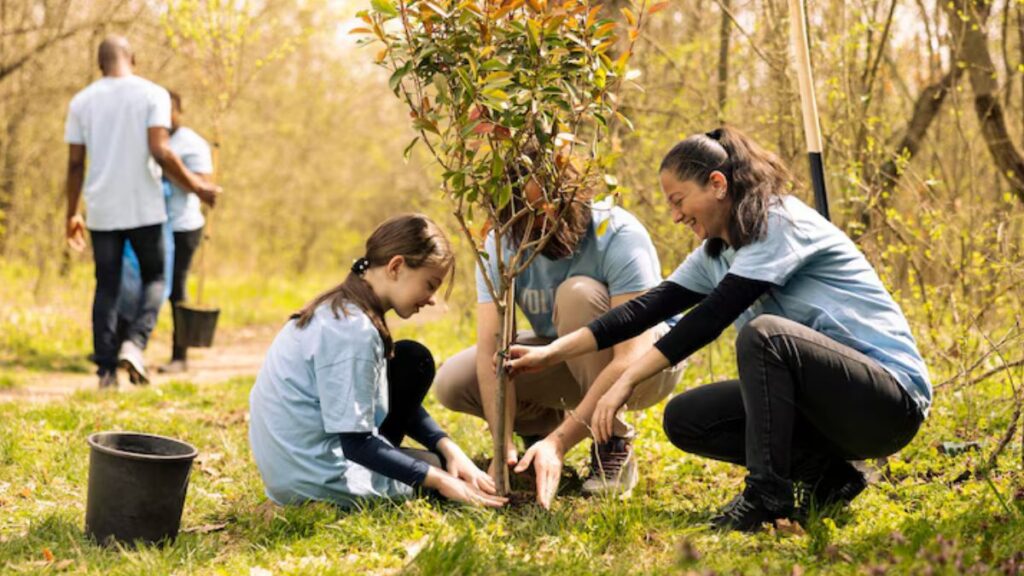Sodziu, in an era of rapid urbanization, digital overstimulation, and environmental degradation, a quiet revival emerges from the countryside. It speaks not of futuristic cities or AI-powered sustainability, but of something older, wiser, and deeply rooted: the sodziu way of life.
Derived from the Lithuanian word sodžius, meaning “village,” Sodziu is more than a place—it’s a philosophy of ecological living, inspired by ancestral knowledge, local biodiversity, and community-centered resilience. It’s about living with the land, not just on it. It’s about growing food, building soil, honoring seasons, and reconnecting with the web of life that sustains us.
This blog post takes you on a 5000-word journey through the world of So dziu ecology—its principles, practices, challenges, and possibilities in a climate-challenged 21st-century.
Chapter 1: The Wisdom of the Village
1.1 Roots of Ecological Consciousness
For centuries, rural villages across Europe, Asia, Africa, and the Americas developed indigenous ecological systems that preserved the land, respected its rhythms, and avoided depletion. These communities:
-
Practiced rotational farming and seasonal land rest
-
Used composting, natural fertilization, and zero-waste food systems
-
Maintained diverse polycultures that increased resilience to pests and climate shocks
-
Built homes with local, low-impact materials like clay, wood, and straw
Sodziu is a modern interpretation and revival of these pre-industrial ecological wisdoms.
1.2 The Village as Ecosystem
A Sodziu village can be seen as an ecological microcosm, where:
-
Human needs are met through localized solutions.
-
Economic activity is circular and regenerative.
-
Land is held in stewardship, not exploitation.
-
Energy flows mimic natural cycles (sun, wind, water)
Unlike modern cities that draw resources from afar, Sodziu communities aim to live within the biocapacity of their region.
Chapter 2: Ecological Principles of Sodziu
2.1 Agroecology and Food Sovereignty
At the heart of Sodziu is the regenerative agricultural model known as agroecology. It’s about farming with nature rather than against it.
Key practices include:
-
No-till farming to preserve soil health
-
Crop rotation and companion planting
-
Water harvesting and closed-loop irrigation
-
Seed saving and heirloom diversity
Food is not treated as a commodity, but as a right, a ritual, and a relationship. Sodziu gardens and farms are nutrient-rich, low-carbon, and culturally adapted.
2.2 Biodiversity Conservation
Sodziu prioritizes biodiversity at all levels:
-
Flora: Diverse native plants support soil, insects, and microclimates
-
Fauna: Pollinator gardens, hedgerows, and small wetlands attract birds and bees
-
Cultural: Heritage breeds of livestock and traditional food plants are maintained.
Every element has a role—not just in productivity, but in ecological balance and cultural continuity.
2.3 Circular Economies and Zero Waste
The Sodziu lifestyle embraces resource frugality and reusability:
-
Organic waste becomes compost.
-
Graywater nourishes trees
-
Tools and clothing are repaired, not discarded.
-
Markets prioritize barter, sharing, and local currency
These systems reduce dependence on global extractive supply chains.
Chapter 3: Sodziu Architecture and Energy Systems
3.1 Eco-Architecture: Building in Harmony
Sodziu homes are designed with vernacular architecture principles:
-
Passive solar design for heating and cooling
-
Natural insulation with sheep wool, clay, or hempcrete
-
Rainwater harvesting roofs
-
Living walls and green roofs for temperature regulation and food production
Buildings are beautiful not because they are luxurious, but because they are rooted in place, purpose, and sustainability.
3.2 Renewable Energy in the Village
Sodziu doesn’t depend on fossil fuel grids. Instead, communities use:
-
Solar microgrids
-
Wind turbines for water pumping
-
Biogas from animal waste
-
Hydropower in river regions
Energy is decentralized, clean, and community-owned, reducing emissions and boosting energy sovereignty.
Chapter 4: Ecological Education and Culture
4.1 Learning from the Land
Education in Sodziu isn’t confined to classrooms. It happens in:
-
Fields and forests
-
Community kitchens and bakeries
-
Workshops on herbalism, cheese making, carpentry, and seed saving
Children learn interdependence, ecological literacy, and cultural heritage, not just facts.
4.2 Rituals of Nature
Sodziu culture is seasonal and celebratory:
-
Solstice gatherings
-
Harvest feasts
-
Spring planting festivals
-
Animal blessing days
These rituals deepen ecological empathy and communal cohesion.
Chapter 5: Sodziu in the Face of Climate Change
5.1 Climate Adaptation
Sodziu communities are inherently resilient:
-
Local food systems reduce supply chain shocks.
-
Natural water management buffers against drought and flood
-
Community bonds provide mutual aid during disasters
By re-aligning with natural cycles, Sodziu is a living model for climate adaptation.
5.2 Climate Mitigation
Through carbon-sequestering soils, afforestation, and reduced emissions, sodziu:
-
Acts as a carbon sink
-
Avoids emissions from industrial supply chains
-
Helps reverse ecological degradation
It proves that living simply can have profound planetary impacts.
Chapter 6: Global Sod ziu Movements
6.1 Eco-Villages and Transition Towns
Globally, sodziu-inspired movements include:
-
The Global Ecovillage Network (GEN)
-
Transition Towns in the UK
-
Permaculture farms across Australia and Africa
-
Regenerative villages in Latin America
They show that local, small-scale, ecologically designed communities are not utopian—they are practical and already happening.
6.2 Urban Sodziu: Bringing Village Wisdom to Cities
Sodziu values can also transform cities:
-
Community gardens on rooftops
-
Shared solar grids in neighborhoods
-
Repair cafés and seed libraries
-
Nature-based schools and local markets
Even in dense environments, the spirit of sod ziu can thrive.
Chapter 7: Challenges and Criticisms
7.1 Land Access and Equity
Many want to live in sociable-style communities but face barriers:
-
High land prices
-
Legal restrictions
-
Lack of startup resources
Solutions include:
-
Land trusts and co-ops
-
Policy reforms
-
Community land banks
7.2 Cultural Romanticism vs. Practical Reality
While sod ziu is inspiring, it’s not easy:
-
Farming is labor-intensive
-
Winters can be harsh.
-
Conflict can arise in small communities.
True sociobiology balances idealism with realism, embracing imperfection and adaptability.
Chapter 8: Digital Ecology and the Future of So dziu
8.1 Tech for the Village
Sodziu doesn’t reject technology—it adapts it responsibly:
-
Drones for mapping reforestation
-
Blockchain for tracking seed sovereignty
-
AI for optimizing irrigation
-
Online platforms for knowledge sharing and crowdfunding
The key is tech in the service of life, not the other way around.
8.2 Youth and the So dziu Renaissance
A new generation is returning to the land—not to escape, but to create anew:
-
Digital nomads starting off-grid farms
-
Eco-influencers teaching composting and herbalism
-
Urban youth joining green apprenticeships
They blend tradition with innovation, reshaping what progress means.
Conclusion: Reclaiming Our Ecological Belonging
In a world gripped by ecological anxiety, the Sodziu philosophy offers a grounded, hopeful path forward. It reminds us that:
-
Ecology begins in community.
-
Sustainability starts with food.
-
Technology must serve nature, not dominate it
-
The village is not backward—it is a blueprint for resilience
Whether you live in a high-rise or a hillside, Sodziu invites you to reconnect—to plant something, to learn something, to share something, and to remember: you are not separate from the Earth—you are one of its stewards.


